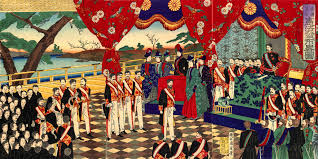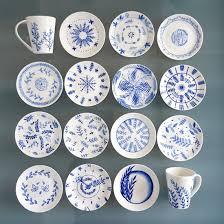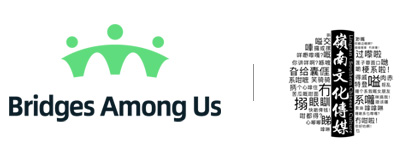Objective:
- Students will gain an understanding of the major events and periods in the history of Japan.
- Students will analyze the impact of key historical developments on Japanese society, culture, and politics.
Lesson 1: Ancient Japan
Introduction:
- Begin the lesson by asking students what they know about Japan's history. Encourage them to share any prior knowledge or associations they have with Japan.
- Explain that today's lesson will focus on ancient Japan, including the Jomon, Yayoi, and Kofun periods.
Main Activities:
1) Jomon Period: (https://www.worldhistory.org/Jomon_Period/)
-
- Provide an overview of the Jomon Period, highlighting the lifestyle, pottery, and early agricultural practices of this era.
- Show images or artifacts from the Jomon Period and discuss their significance.
2) Yayoi Period:
-
- Explain the transition from the Jomon to the Yayoi Period, emphasizing the introduction of rice cultivation, metalworking, and the establishment of social hierarchy.
- Discuss the influence of Yayoi culture on the development of Japanese society.
3) Kofun Period:
-
- Describe the emergence of centralized states and the construction of large burial mounds (kofun) during this period.
- Discuss the significance of the Yamato state and its role in early Japanese politics and culture.
Conclusion:
- Review key points from the lesson and clarify any questions students may have.
- Assign students to research and prepare brief presentations on one aspect of ancient Japanese history for the next class.
Lesson 2: Medieval and Feudal Japan
Introduction (10 minutes):
- Recap the previous lesson by reviewing the Jomon, Yayoi, and Kofun periods.
- Explain that today's lesson will focus on medieval and feudal Japan, including the Heian, Kamakura, Muromachi, and Sengoku periods.
Main Activities (30 minutes):
1) Heian Period (10 minutes):
-
- Discuss the establishment of the Heian capital and the flourishing of aristocratic culture during this era.
- Highlight the importance of literature, art, and religion (particularly Buddhism) in shaping Heian society.
2) Kamakura and Muromachi Periods (10 minutes):
-
- Describe the rise of the samurai class and the establishment of the Kamakura shogunate.
- Explain the transition to the Muromachi Period and the dominance of the Ashikaga shogunate.
3) Sengoku Period (10 minutes):
-
- Introduce the Sengoku Period as a time of warfare and political upheaval.
- Discuss key figures such as Oda Nobunaga, Toyotomi Hideyoshi, and Tokugawa Ieyasu, and their roles in unifying Japan.





Post a comment Cancel reply